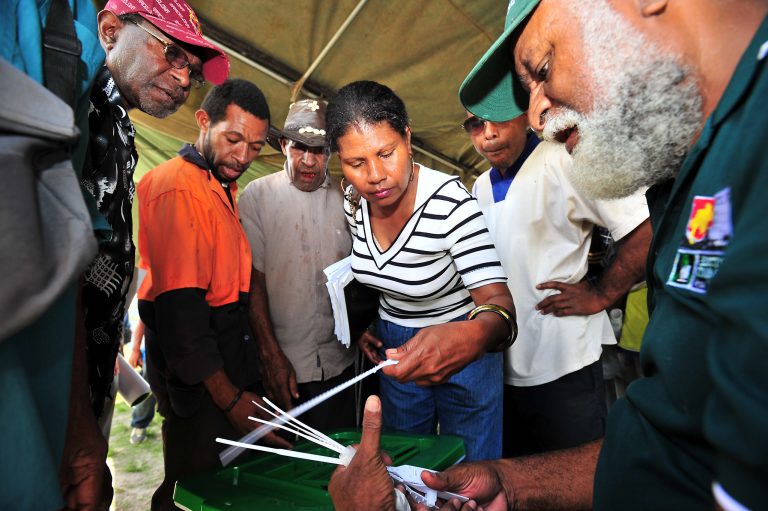This post is part of a three-part series that explores the power of new information technologies, in particular cryptography, to profoundly benefit humanity, creating new ways for social and economic institutions to function. Concepts presented here arose through informal research performed by the author under the guidance of Dr. Joseph Hughes, Founding Director of the Peace Engineering Program at Drexel University in Philadelphia, Pennsylvania (USA). This information also formed part of a masters certificate program at the Mortenson Center in Global Engineering at the University of Colorado Boulder.
- Cryptographic Institutions Part One: Humanitarian Identity – the first post focuses on individuals and the extreme context of forced displacement.
- This second post focuses on market activity.
- Cryptographic Institutions Part Three: Honest Governments – the third post focuses on systems of governance and collective action, and also addresses practical barriers and risks for all three posts.
Cryptosystems, blockchains and other emerging information technologies are changing business as we know it, and have the potential to improve market equity. To understand how, let’s look at the role of traditional IT in markets now, then explore how cryptographic technology can improve it.
Economies may be broadly described as the movement of physical things. But, the behavior of markets depends heavily on less tangible information systems. Examples include the pricing system (price indexes and fair-price information like Consumer Reports and Kelly Blue Book), interest rates, exchange rates, inflation rates, debt and unemployment rates, market trends of supply and demand, consumer research, supply chain coordination, buyer-seller networks, and intelligence on regional conditions and the ease of doing business. Some of this information is built by central organizations that aggregate private information and then share public statistics. Otherwise, organizations spend significant resources on intelligence efforts or rely on gossip from professional networks.
Essentially, strategic economic information is built from the details of all the deals and transactions that occur. All that information is difficult to coordinate, however. Money flows are either untraceable cash, or occur privately through banks. The contents of transactions, contracts, and deals are managed within company customer service, human resources, shipping and fulfillment, and legal departments. Often these departments use seperate, manual, and proprietary systems and data formats. Connections between suppliers and buyers can be made through marketplaces, natural social networks, or efforts like marketing and internet searches.
In summary, economic information exists in scattered, informal, manual, opaque, and/or corrupt information systems. Much of the basic information is sensitive and needs to be kept private. But, making the resulting trends, intelligence, governance and coordination more transparent and accessible would significantly reduce economy-related violence and exploitation. Besides less expensive and more equitable market intelligence, transparent tracking and coordinating of supply chains increases efficiency (just-in-time and Lean manufacturing), trust (tracking packages and mishandling), and value (certifications like fair trade, organic, etc.).
Market activity could be greatly improved by emerging information technology.
Market activity could be greatly improved by emerging information technology. Zero-knowledge proofs (ZKP), in the form of ZK-snarks, allow information to be authenticated without divulging the exact information. For example, a person could prove employment with a company without revealing their identity. Secure multi-party computation (SMC) can calculate statistics without knowing any specific data points. For example, the average market price for a product can be calculated without knowing the price any specific company is selling it for. Advanced distributed cryptographic databases, like the hyperledger blockchain, automate storage and dissemination of trustworthy information. They can also operate smart contracts and information audits.
Smart contracts are a set of instructions that are executed automatically by a distributed database. Ownership titles to physical goods or assets, money, certifications, and the agreed upon responsibilities and details of an order shipment, employment, debt or business partnership can all be recorded and transferred securely and automatically.
Physical activity can be aligned with the information activity in smart contracts by advanced protocols, agreement by all parties, and incentives. For example, a shipping agency’s reputation would be tied to the honesty of their certifications of deliveries. Also, IOT and AI now provide autonomous, constant, and instantly accessible measurements which track physical activity more objectively and efficiently. Some examples include GPS tracking, satellite imagery, weight and volume measurements, QR code tracking, cameras, and precision agriculture sensors.
The five forces protecting supply chains
There are, perhaps, five main forces to reduce illicit and violent practices along supply chains, and each depends on information.
- Balanced power and competition
- Consumer demand
- Government regulation
- Employee pressure
- Self-regulation
The first is balanced power and competition. It can be difficult for a rural farmer in Honduras to know the true value of the coffee beans they are selling. It is also hard for them to connect with competing buyers who would pay higher prices, and some markets are simply inaccessible when selling small quantities.
A recent study showed that 90 percent of the actors in the Columbian Coffee value chain are coffee growers. But these growers only see 5 percent of the total value generated along their coffee’s supply chain. More sophisticated, less costly, and transparent crypto-supply-chain tracking (like Fantine or Bext360) could make information and power more equitable in supply chains. It could also make it easier for small farmers to coordinate and aggregate their produce to access larger markets.
The second force is consumer demand. To demand responsible products, consumers must have reliable measures to differentiate products. This is the purpose of certifications like fair trade, sustainably-fished, and organic. However, creating these certifications can be very expensive, which excludes many producers. Also, the certifying agency may or may not be competent and honest. With detailed crypto-supply-chain tracking much of the certification process could be automated by performing calculations over the smart contract details along the traced supply chain leading to a product. Imagine each product in a store having a QR code link to the entire history of the product. Many more organizations could create competing certifications, giving consumers much more choice and targeted information.
The third force is rules and enforcement, or government regulation. Business regulation must optimally balance reducing collusion, monopolies and violent practices, versus red-tape and corruption limiting prosperity. As technology advances the ability to track activity and target only bad behavior becomes more sophisticated and lower cost. Today’s new IT could change this balance dramatically. Take the fishing industry as an example.
The ocean is big, and it’s very easy to hide illicit behavior on the high seas. Illegal, unregulated, and unreported (IUU) fishing wrecks protected natural habitats, steals over 23 billion USD each year in business from honest fisherman, and is a haven for human trafficking and slave labor. Oceana’s 2016 review of 55 different studies showed that 1 in 5 samples of fish was mislabeled, and 65 percent of studies found economic motivation behind the mislabeling. Many other supply chains (blood diamonds, conflict minerals, tea and coffee, electronic recycling, and sweat-shop clothing) all exhibit similar problems. The typical solution is greater traceability and transparency. For example, most boats can be required to carry GPS tracking beacons, report their catches, and use responsible fishing equipment. Biometrics and identity systems could privately track the duration of fishermen’s time on the water, combating human trafficking. Tracing the complete movement of fish along the supply chain from consumer to boat could keep all parts of the chain accountable, even when problems are only noticed later in the chain.
The fourth, employee pressure, comes in at least three forms. (1) If employees can access alternative employers and know the true value of their skills, then competition between employers keeps wages and working conditions just. Cryptosystem economies could provide a supercharged version of Glassdoor using the transparency-with-privacy that ZKP can provide. (2) There is a natural pressure to improve wages and working conditions because happier employees are more productive. However, good data on conditions and productivity is necessary to know how much employee benefits are worthwhile. Crypto-supply-chain data could make these statistics much easier to track. (3) The final employee pressure is collective bargaining. Collective action and coordination will be discussed more in the following post. Also, cryptosystem-tracked economics would make it far easier to formalize employment – a challenge many organizations are concerned about.
The fifth force is simply self-regulation. The cause of self-regulation (ethics, religion, compassion) can seem somewhat uncontrollable. But it basically requires good stories. When people are convinced that a compelling story of suffering is true, it elicits empathy and compassion. When the effects of actions aren’t immediately obvious and the actor hasn’t heard stories, statistics, or arguments relating their actions to negative effects, then they have no motivation to not act in their personal best interest. But, with detailed, accurate and compelling evidence of how supply-chain actions cascade into problems, people can be motivated into changing behavior. Managing supply chains with cryptosystems could make stories and statistics far easier to create and more trustworthy.
Improving business with “digital advice” services
The idea behind extension services is to bring the best techniques and knowledge from experts and academia to common businesses. Information automata could radically increase the reach and efficiency of best-practice dissemination through “digital advice” services. For example, Farmbetter brings expert know-how to any farmer through a smartphone app. The farmer can enter details about their location, land conditions, and business goals and the app will provide them with tailored recommendations which can significantly improve their results.
These services can be improved even more with higher quality data from new IOT sensing capabilities. In farming, tools like Arable and Cropx could be adapted to lower-income situations to provide the same “Precision Ag” benefits of reduced inputs and better yields. New AI sensors are even able to automatically identify farming pests in real time. Artisanal and small-scale mining (ASSM) is another good example. ASSM is an important livelihood for at least 100 million people. It requires proper practices to avoid serious environmental and human damage, but it suffers from poor documentation, property rights, and other issues.
Daunting, but not impossible
The more comprehensively these crypto-enabled economic systems cover the economy the more the benefits would compound. It may seem like a daunting industry disruption to undertake, but solutions described here and others are already laying the groundwork.
The final post will discuss the impact of information automata on collective action and governance.
About the Author
Tejovan Parker completed his professional masters in mechanical engineering from the University of Colorado Boulder in May 2020, focusing on controls and system modelling. He also completed a masters certificate with the Mortenson Center in Global Engineering, and was an intern working on a market systems resilience indicator at iDE. He is a Colorado native. Now he wishes to pursue a PhD in computer science or related field and apply it to global engineering.

